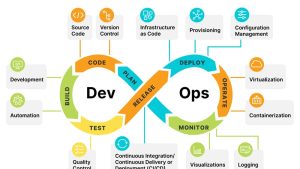How are FPGAs Used in Trading?

FPGA, or a Field Programmable Gate Array is nothing but a chip which can be programmed to suit any purpose. You can program it as often as you want and wherever you need it. Further, you can obtain multiple advantages with an FPGA, which include low latency, energy efficiency and high performance.
What are FPGAs used for?
To completely understand what an FPGA has to offer, you can begin by imagining a performance spectrum. There will be a Central Processing Unit (CPU) at one end, offering a generic instruction set, which can be combined to carry out and complete a wide array of different tasks. This is what makes the CPU very flexible, and its behaviour can be defined using the software. But CPUs are also slow because they need to select from a variety of generic instructions available to complete the tasks.
At the other end of the spectrum will sit an ASIC or Application-specific Integrated Circuit. These are known to have higher potential speeds, and they are built with a single task in mind. The ASICs, however, cannot be changed and will take quite a good amount of money and time for development.
Now, FPGAs are the perfect middle ground. They contain thousands or even millions of core logic blocks (CLBs). These blocks are configured and combined to process every task that a CPU solves. The FPGAs do not have the added burdens of hardware. This makes them quick and effective in carrying out multiple tasks simultaneously. Ultra-low latency is another benefit of FPGAs. As a result of their programmability and flexibility, they can be used to achieve ultra-low latency. In fact, many exchanges are choosing FPGAs as an alternative to ASICs (application specific integrated circuit) to reduce latency and improve performance.
How FPGAs are used in high performance financial applications?
Stocks and securities are bought and sold based on speed and versatility only. And, this is the time when electronic trading is ruling the world, and decisions are being made in the blink of an eye. When the prices and the orders change, new information is fed from the exchanges and other sources to the companies via high-speed networks. This information arrives at a very high speed, and the time is measured in nanoseconds. High bandwidth is required to process it because of the large volume and speed of data. Specialized trading algorithms are needed to make use of the new information and make trades. This is where FPGAs provide the perfect platform for these application developments. They can be used to revolutionize trading environments, such as improving latency and throughput. They also can create ultra-low latency trading systems, scale up the capacity of existing trading systems and process complex analytics in real-time.
The exchange of data is a key part of what makes markets work. It’s also at the heart of many problems that can occur in financial markets, such as latency and price manipulation. FPGAs offer a unique solution by accelerating data processing to help protect against these issues while maintaining low latency and costs for exchanges.
Orthogone’s low latency FPGA solutions have all the essential features, ensuring the best financial solutions.





